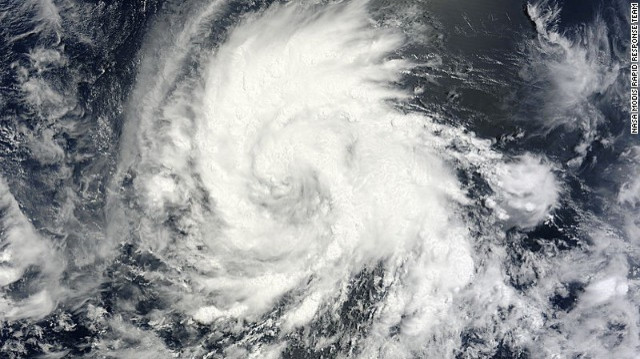Hurricanes Emilia And Daniel Strengthening Over Eastern Pacific

Hurricanes Emilia and Daniel are both gaining strength over the eastern Pacific Ocean, where they have become major storms in recent days, threatening ships in their path but not likely making landfall before they peter out.
The National Weather Service's National Hurricane Center reports that the storms appear unlikely to make landfall as they are moving westward away from the western coast of the United States, but that they are sizable nonetheless.
Of the two storms, Daniel emerged first, starting out as a tropical depression on July 4, then swiftly becoming a tropical storm, and by Sunday afternoon turning into a Category 2 hurricane, according to MSNBC.
According to the National Hurricane Center in Miami, Hurricane Daniel has hit sustained wind speeds of up to 85 miles per hour, though it is weakening as it moves west from its location Monday evening about 1,300 miles west-southwest from the southernmost point in Baja California, Mexico, MSNBC reported. The storm is expected to die down significantly over the next two days.
Though Hurricane Daniel is not forecast to hit land while in its full strength, AccuWeather predicts that high winds and heavy rain could strike Hawaii as the last dregs of the storm pass by on Saturday, MSNBC reported.
Daniel was the third Pacific hurricane so far this year, and Emilia came right on its heels. Hurricane Emilia is expected to turn into a Category 3 major hurricane later today or tonight, the National Hurricane Center reported Monday afternoon, according to CNN.
Emilia is stronger than Daniel, and if it does hit the Category 3 milestone, that means it will have sustained winds of more than 111 mph, the National Hurricane Center told CNN.
As of Monday afternoon, Hurricane Emilia was centered about 680 miles south of the southern tip of Baja California.
A third area of the eastern Pacific was poised Monday evening to possibly yield yet another serious storm, though the National Hurricane Center estimates that there is only a 30 percent chance of that region of low pressure located over the Pacific Ocean several hundred miles south of Acapulco, Mexico, becoming a full-fledged tropical cyclone.
© Copyright IBTimes 2024. All rights reserved.





















